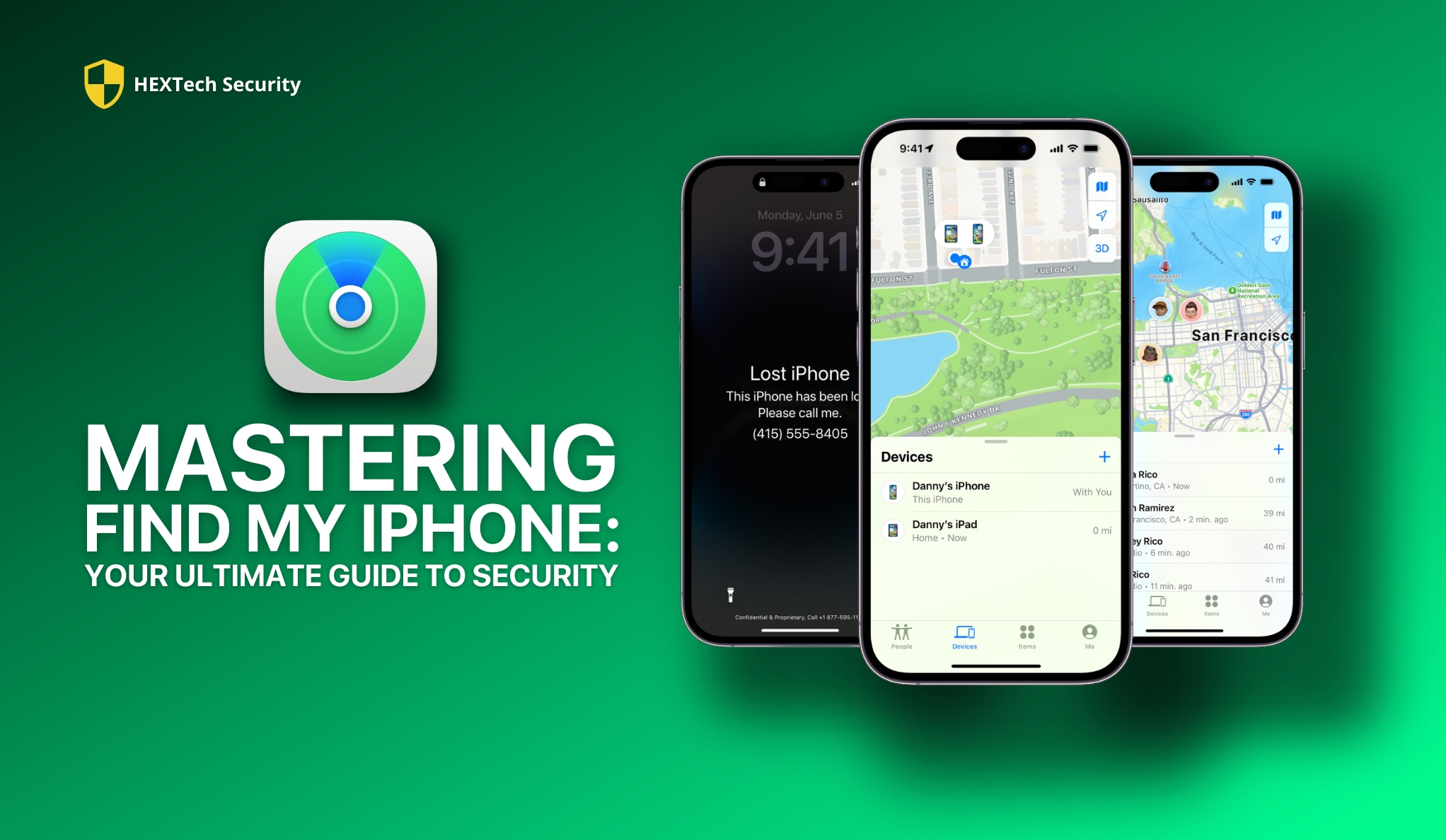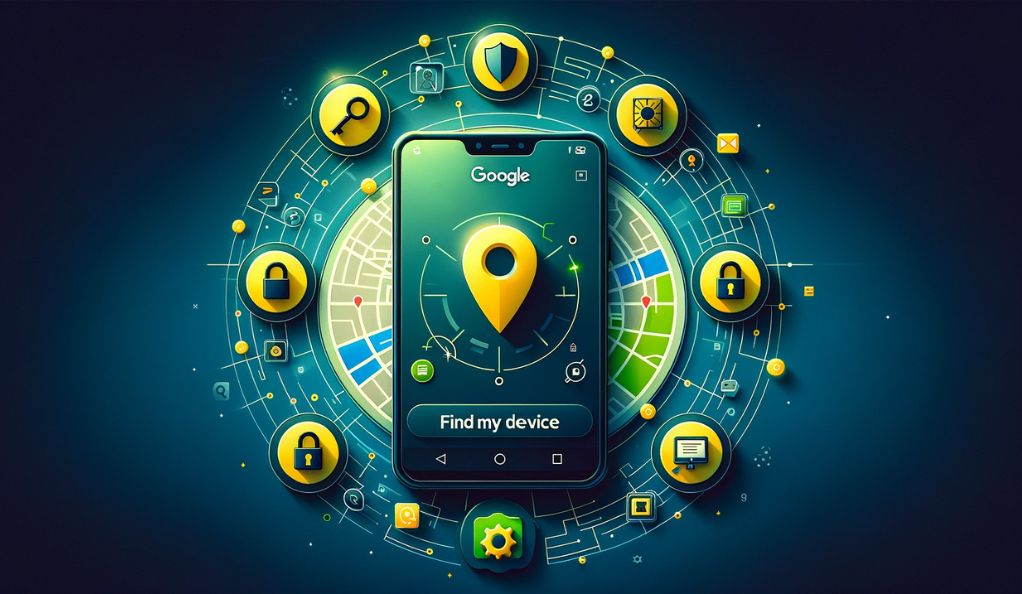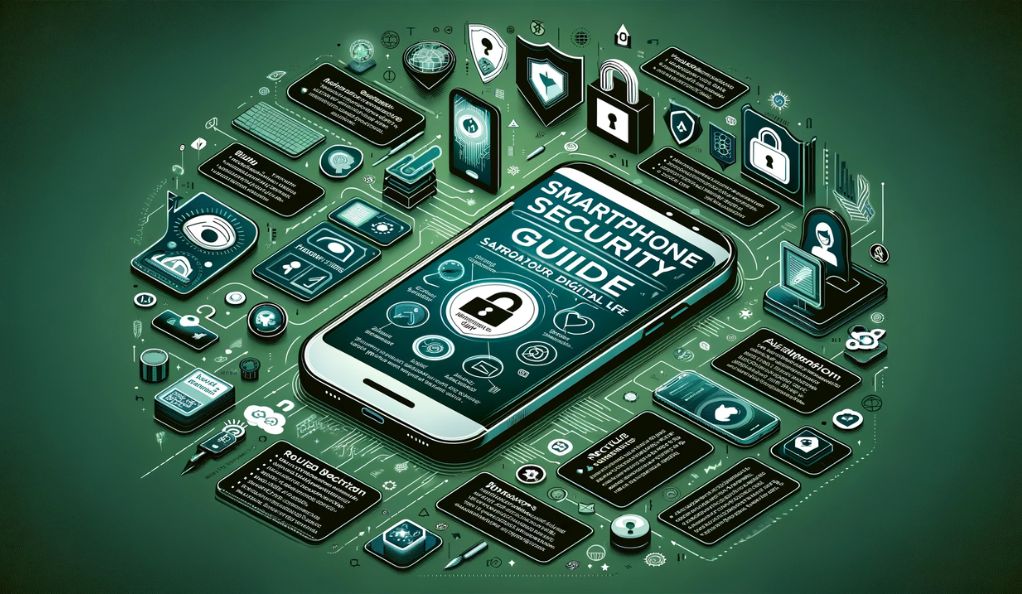In 2024, Find My iPhone has undergone significant enhancements, making it more than just a tool for locating misplaced devices. With the latest iOS updates, Apple has redefined device tracking and security, introducing features that cater to the modern user’s needs. This guide explores these updates, focusing on how they contribute to a more secure and connected Apple ecosystem.
Overview of New iOS Features and Their Impact on Device Tracking and Security
The most recent iOS updates bring a suite of features that bolster Find My iPhone’s capabilities. These updates include advancements in family safety, device security for lost or stolen devices, and more intuitive user experiences. For instance, the introduction of Stolen Device Protection in iOS 17.3 marks a pivotal shift in how users can safeguard their devices against unauthorized access. Meanwhile, enhancements in family tracking features allow users to stay connected with loved ones, offering peace of mind and ease of use.
Tracking Family Members:
The “Find My” app on iOS devices is a valuable tool for families to stay connected and ensure each other’s safety. It allows users to share their locations with family members, facilitating easy coordination and peace of mind, especially for parents keeping an eye on their children. This feature is particularly useful in crowded places, during travel, or in emergency situations where locating a family member quickly is crucial. The app provides real-time location sharing, so you can see where your family members are at any given moment. Additionally, location alerts can be set up for when a family member arrives at or leaves a specific location, like home, school, or work. This feature fosters independence while ensuring safety. It’s also a discreet way to ensure elderly family members are safe without being intrusive.
How to Setup:
- Open the “Find My” app on your iOS device.
- Go to the ‘People’ tab at the bottom of the screen.
- To share your location with a family member, tap ‘Share My Location’, then enter their Apple ID email. They must accept your request.
- To see someone’s location, they must share their location with you from their device.
- Once a family member has shared their location with you, it will appear in your list. Tap their name to see their location on the map.
- For location alerts, tap on a family member’s name, then choose ‘Add’ under Notifications. Set alerts for when they arrive at or leave a particular location.
Remember, for privacy and safety, location sharing should be consensual, and it’s important to respect each other’s privacy and use this feature responsibly.
This setup offers a straightforward way for family members to stay connected and informed about each other’s whereabouts, enhancing both safety and convenience.
Locating Lost or Stolen Devices:
“Find My iPhone” is an indispensable feature for iOS users, providing a lifeline in case your device gets lost or stolen. Once enabled, it allows you to locate your iPhone, iPad, iPod touch, or even your Mac from any other iOS device or via iCloud on a web browser. The feature uses GPS and internet connectivity to show the real-time location of your device on a map. It’s not just a tool for finding a misplaced phone in your home; it becomes critically important if your device is stolen or lost outside. In such cases, it can show you the last known location of your device. Furthermore, “Find My iPhone” includes options to play a sound (helpful if the device is nearby), activate ‘Lost Mode’ which locks the device with a passcode and can display a custom message with a contact number, and as a last resort, remotely erase all data to protect your privacy.
How to Setup:
- On your iOS device, go to ‘Settings’.
- Tap on your name at the top, then select ‘iCloud’.
- Scroll down and select ‘Find My iPhone’.
- Toggle on ‘Find My iPhone’. Ensure that ‘Send Last Location’ is also turned on for added security.
- To locate a device, either use another iOS device where you are signed in with the same Apple ID or go to iCloud.com on a web browser.
- Open ‘Find My iPhone’ on the second device or on iCloud.com.
- Sign in with your Apple ID if prompted.
- Select the device you want to locate from the list of devices.
- The map will show the location of your device. You can then choose to play a sound, use Lost Mode, or erase the device.
By following these steps, you’ll be able to quickly and effectively respond in case your device is lost or stolen, greatly increasing the chances of recovering it.
Activation Lock:
Activation Lock is a security feature integrated into Find My iPhone, designed to prevent anyone else from using your iPhone, iPad, or iPod touch if it’s lost or stolen. This feature is automatically enabled when you turn on Find My iPhone. Activation Lock helps to keep your device secure, even if it’s in the wrong hands, and improves your chances of recovering it. When enabled, your Apple ID and password will be required before anyone can turn off Find My iPhone, erase your device, or reactivate and use your device. This significantly reduces the likelihood of theft, as the device becomes less valuable for reselling. It also protects your personal information when your device is lost or stolen. Even if you remotely erase your device, Activation Lock can continue to deter unauthorized use of your device after it’s wiped.
How to Setup:
- Ensure you have an Apple ID and are signed in to iCloud.
- On your device, go to ‘Settings’.
- Tap on your name at the top to access Apple ID settings.
- Select ‘iCloud’ and then scroll to ‘Find My iPhone’.
- Toggle on ‘Find My iPhone’. Activation Lock is automatically enabled when Find My iPhone is turned on.
- To check if Activation Lock is enabled, go to iCloud.com.
- Sign in with your Apple ID, and go to ‘Find iPhone’.
- Click on ‘All Devices’ and select your device. If it shows ‘Locked’, then Activation Lock is enabled.
By following these steps, you can ensure that your device is secured with Activation Lock, offering an additional layer of protection against unauthorized access and use. This feature is particularly important for safeguarding your personal information in the event your device is lost or stolen.
Lost Mode:
Lost Mode is a feature within Find My iPhone that provides additional security and peace of mind if your Apple device is lost or stolen. When activated, Lost Mode locks your device with a passcode, preventing anyone else from accessing your personal information. It also tracks the device’s location and displays a custom message on the lock screen, which can include a phone number or message to contact if found. Importantly, while in Lost Mode, your device will keep track of its location and share this data with you, giving you a map of where the device has been while it’s out of your hands. Another crucial aspect is that it disables all notifications and alarms, ensuring your privacy is maintained even if the device is not in your possession. Lost Mode is an essential tool for securing your device and increasing the chances of recovery.
How to Setup:
- Access the Find My app on another iOS device or use iCloud.com on a computer.
- Sign in with your Apple ID.
- Select the device you want to put into Lost Mode.
- Choose ‘Activate’ under Lost Mode (or ‘Lock’ on older iOS versions).
- If prompted, enter a passcode to lock your device. This should be a different code than the one you normally use.
- Enter a phone number where you can be reached, which will be displayed on the lost device’s lock screen.
- Write a message to be displayed on the lock screen. This could include information on how to return the device to you.
- The device will now be in Lost Mode, and you will receive location updates.
By enabling Lost Mode, you can secure your lost device, display a message to anyone who finds it, and track its location to hopefully recover it.
Remote Erase:
Remote Erase is a crucial feature in Find My iPhone, designed to protect your personal data in case your iOS device is irretrievably lost or stolen. This feature allows you to remotely wipe all data from the device, ensuring that your private information does not fall into the wrong hands. Once initiated, it performs a complete factory reset, erasing all content and settings, including messages, contacts, photos, and apps. It’s an effective last resort when you believe your device won’t be recovered. However, it’s important to note that once you erase your device, you can’t track it using Find My iPhone. This feature is particularly valuable if your device contains sensitive personal or work-related data. Additionally, if your device is connected to the internet, it will begin the erase process immediately; if it isn’t, the process will start the next time it goes online.
How to Setup:
- Open the Find My app on another iOS device, or access iCloud.com on a web browser.
- Sign in with your Apple ID.
- Select the device you want to erase.
- Choose ‘Erase This Device’ from the options.
- Confirm your decision. You might be asked to enter your Apple ID password as a security measure.
- Optionally, enter a phone number and message to be displayed on the device after it’s erased. This is useful if you want the finder to contact you.
- Confirm the erase process. The device will be wiped clean as soon as it’s online.
By using Remote Erase, you ensure that your private data remains secure, even when your device is out of your hands. It’s a powerful tool for protecting your information, but it should be used judiciously, as it cannot be reversed.
Notify When Found:
The ‘Notify When Found’ feature in Find My iPhone is a helpful tool for locating an offline or out-of-reach device. When your iPhone, iPad, or other Apple device is not connected to the internet, it may not immediately show up on Find My iPhone. However, with ‘Notify When Found’ enabled, Find My iPhone keeps looking for your device using the vast network of Apple devices. Once your lost device comes within the range of an internet connection and its location is detected, you will receive a notification on your other devices. This feature is particularly useful when your device is lost in areas with spotty or no internet connection, as it continually searches for any sign of your device coming online. It’s a passive but effective way to keep tabs on a lost device without having to constantly check the app.
How to Setup:
- Open the Find My app on another device, or log in to iCloud.com on a computer.
- Sign in with the Apple ID used on the lost device.
- Go to the ‘Devices’ tab and select your lost device.
- Scroll down to find the option ‘Notify When Found’ and toggle it on.
- Once your device is detected online, you’ll receive a notification on your other devices or via email.
This setup ensures that you are promptly informed when your lost device is located, increasing the chances of recovery. It’s an essential feature for anyone who may have lost their device in areas with limited or no immediate internet access.
Driving Directions to Device Location:
The ‘Driving Directions to Device Location’ feature in the Find My app is particularly useful when you are trying to retrieve a lost or stolen device. Once you have located your device on the map within the Find My app, this feature integrates with Apple Maps to provide turn-by-turn navigation to the device’s location. This is especially helpful when the device is in an unfamiliar area or if you need the quickest route to reach it. The accuracy of the directions depends on the accuracy of the device’s location data, which can vary based on GPS signal strength and connectivity. This feature streamlines the process of recovering your device, saving you the effort of manually entering the location into a maps app and ensuring you are guided directly to your device’s last known location.
How to Setup:
- Open the Find My app on another iOS device or log into iCloud.com on a web browser.
- Sign in with your Apple ID.
- Select the lost device from the list under the ‘Devices’ tab.
- The device’s location will appear on a map. Select the device to view more options.
- Tap or click on ‘Directions’. This will automatically open Apple Maps and provide driving directions to the device’s location.
- Follow the turn-by-turn directions provided by Apple Maps to reach the device.
By following these steps, you can quickly and efficiently navigate to your lost device’s location, making the recovery process smoother and more straightforward.
View Battery Level:
The ‘View Battery Level’ feature in the Find My app allows you to monitor the remaining battery life of your Apple devices, even when they are lost or misplaced. This feature can be particularly valuable when you are trying to locate a device and want to ensure that it has enough battery power for the tracking to be successful. The battery level is displayed as a percentage, giving you a clear indication of how much charge remains. This information can help you make informed decisions about when to actively track a device or when to conserve battery until it’s needed. It’s a convenient way to stay updated on the status of your devices, especially if you have multiple devices associated with your Apple ID.
How to Setup:
- Open the Find My app on another iOS device or access iCloud.com on a web browser.
- Sign in with your Apple ID.
- Go to the ‘Devices’ tab and select the device for which you want to view the battery level.
- The device’s location and battery level will be displayed on the map. The battery percentage will appear near the bottom of the screen.
- You can now view the current battery level of the selected device.
By following these steps, you can easily check the battery status of your devices, ensuring that you have the necessary information to track and manage them effectively, especially in situations where the device is lost or misplaced.
Share My Location:
The ‘Share My Location’ feature in the Find My app is a valuable tool for staying connected with friends and family. It allows you to share your real-time location with specific contacts or groups of people, ensuring they can keep track of your whereabouts. This feature is especially useful when coordinating meet-ups, ensuring safety during travel, or simply keeping loved ones informed about your location. You have the flexibility to choose who you share your location with, and you can set a timer for temporary sharing or share indefinitely. Your shared location is displayed on a map, making it easy for others to see where you are. It’s a helpful feature for maintaining a sense of security and closeness with your contacts, and it can provide peace of mind to those who care about your well-being.
How to Setup:
- Open the Find My app on your iOS device.
- Tap on the ‘Me’ tab at the bottom right.
- Select ‘Share My Location’.
- Choose ‘Share My Location’ to enable sharing.
- To share your location with specific contacts, tap ‘Add Person’, then select a contact or enter their name or phone number.
- Choose how long you want to share your location: ‘Share for One Hour’, ‘Share Until End of Day’, or ‘Share Indefinitely’.
- Your contact will receive a notification and can now see your location in the Find My app.
By following these steps, you can easily share your location with trusted contacts, enhancing communication and safety in various situations.
Conclusion
The Find My iPhone app offers a comprehensive set of features that not only enhance the security of your Apple devices but also streamline the process of locating and managing them. These features are designed to provide users with peace of mind, whether they are tracking a lost device, safeguarding their personal data, or staying connected with loved ones. Driving Directions to Device Location streamlines the process of reaching your lost device, while View Battery Level provides critical information for effective tracking. Lastly, Share My Location enhances connectivity by allowing you to share your whereabouts with trusted contacts. These features collectively make Find My iPhone a versatile and indispensable tool for securing, tracking, and managing your Apple devices.








